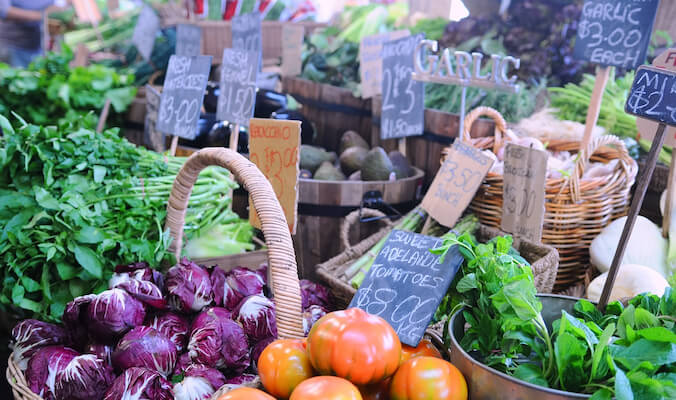Alternative Ways to Buy Food

©
We seem to be entering a new era of food buying. The growing desire to return to traditional ways of producing and sourcing food – with the addition of modern digital technology – is spawning some truly fascinating new food buying experiences.
One-to-one shopping experiences have been replaced with online shopping, 24-hour mega-stores and mass-produced food.
While many of us love the idea of taking the time to visit our friendly local grocer, butcher and baker, the dizzying pace of modern life has all but done away with this style of food buying. One-to-one shopping experiences have been replaced with online shopping, 24-hour mega-stores and mass-produced food. Food waste, packaging and food miles have all risen as a result. But now it seems that digital tech could be the answer to helping us buy locally sourced and sustainable food.
A convenient way to shop local
One of my favorite new digital platforms is Food Assembly. This creative enterprise epitomizes the merging of old and new food buying approaches: it’s the convenient way to shop local. Consumers shop online from a collection of local producers who supply their nearest Food Assembly. They then collect their weekly shop from their local Food assembly location, enjoying both convenience and community. It’s a great way to meet producers and other food enthusiasts, find out more about where our food comes from, and (most importantly) buy delicious produce that hasn’t traveled half way around the globe!
Digital marketing and promoting events can entice shoppers to buy local.
Digital marketing can entice shoppers to buy local when used to promote exciting events and tastings. Take the fantastic Kreuzberg food market, Markthalle Neun, and their lively selection of weekly events, from ‘Streetfood Thursday’ to cooking workshops and festivals. Their imaginative approach transforms food buying from a mundane chore into fun destination activity.
Growing demand for alternative ways to buy food
The world of technology can also help buyers to find specialist ingredients.
Whether a shopper has food intolerances or wishes to follow a certain food trend, there is a growing demand for unusual ingredients. And while demand is perhaps high enough to support local specialist stores in big cities like Berlin, consumers in rural areas often miss out, as small stores struggle to survive. Online shops, such as Veganz, improve the accessibility of specialist products so that everyone can enjoy their benefits.
It isn’t always easy for small food start-ups to compete with well-established supermarket giants though. Emma’s Enkel is a prime example. These local stores opened with a vision of bringing back a personal touch to shopping. But they were swiftly swallowed up by the giant chain, Metro. Now Emma’s Enkel exists purely as an online shop, in sad contrast to its founders’ original vision.
Change
Consumers are keen to embrace sustainable ways of shopping.
Today’s consumers are not only willing to embrace more traditional and more sustainable ways of shopping, but they also demand alternative ways to buy food. Perhaps the answer is for us all to meet in the middle – with shoppers accepting a slower shopping experience in order to enjoy local food and producers utilizing innovations in digital tech to make shopping as convenient as possible.
The result? Happy shoppers, happy producers and happy planet.


